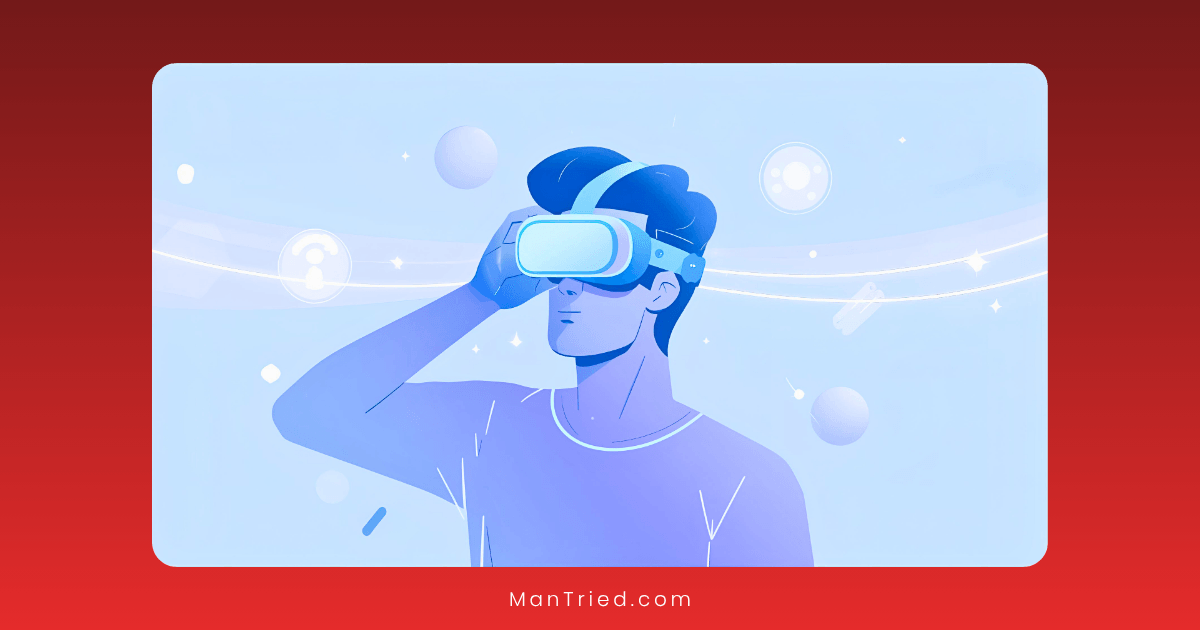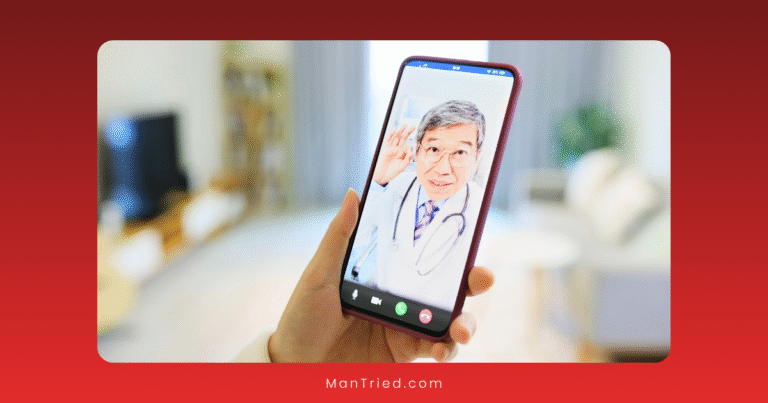Virtual Reality Exposure Therapy for Sexual Anxiety and Dysfunction

Sexual anxiety and dysfunction affect a significant portion of the population—up to one-third of adults experience some form of sexual difficulty during their lifetime. These conditions can profoundly impact intimate relationships, self-esteem, and overall quality of life. While traditional therapeutic approaches have shown effectiveness, many individuals face barriers to treatment, including embarrassment, limited access to specialized care, and difficulty engaging in exposure-based techniques.
Enter virtual reality exposure therapy (VRET): an innovative approach that’s revolutionizing how clinicians address sexual concerns. By 2025, this technology has evolved from experimental to evidence-based, offering new hope for those struggling with sexual anxiety and dysfunction.
Understanding Sexual Anxiety and Dysfunction
Before exploring the virtual reality solutions, it’s important to understand the conditions they address:
Sexual Anxiety
Sexual anxiety encompasses a range of psychological discomfort related to sexual activity, including:
- Performance anxiety (fear of not satisfying a partner or “failing” sexually)
- Body image concerns during intimate situations
- Fear of vulnerability or emotional intimacy
- Anxiety about sexual pain or discomfort
- Concerns about sexual identity or preferences
Sexual Dysfunction
Sexual dysfunction refers to persistent problems that interfere with sexual response or satisfaction:
- Erectile dysfunction
- Premature ejaculation
- Female orgasmic disorder
- Genito-pelvic pain/penetration disorder
- Sexual aversion disorder (SAD)
- Hypoactive sexual desire disorder
Dr. Elena Ramirez, a sexual health specialist at the Center for Sexual Medicine, notes: “What makes these conditions particularly challenging is their self-reinforcing nature. Anxiety about sexual performance often creates the very problems patients fear, establishing a cycle that’s difficult to break through conventional means alone.”
The Evolution of VR in Sexual Health Treatment
Virtual reality has evolved dramatically since its early applications in mental health. Today’s systems offer immersive, high-fidelity environments that can replicate intimate scenarios with remarkable realism.
“The technology has reached a tipping point where the brain genuinely accepts these virtual environments as real,” explains Dr. James Chen, neuroscientist and VR researcher. “This triggers authentic emotional and physiological responses that can be therapeutically valuable.”
Key technological developments enabling effective VRET for sexual concerns include:
- High-resolution displays eliminating the “screen door effect” of earlier headsets
- Haptic feedback systems that simulate touch sensations
- Advanced motion tracking for natural interaction
- Sophisticated emotional AI that responds realistically to user behavior
- Customizable scenarios tailored to individual preferences and therapeutic needs
How VRET Works for Sexual Concerns
Virtual reality exposure therapy applies the principles of traditional exposure therapy—confronting feared situations in a controlled manner to reduce anxiety—within a computer-generated environment. For sexual concerns, this approach offers unique advantages.
The Therapeutic Process
A typical VRET protocol for sexual anxiety or dysfunction might include:
- Assessment and Preparation: The therapist evaluates the nature and severity of the sexual concern, establishes treatment goals, and familiarizes the client with VR technology.
- Scenario Development: Customized virtual scenarios are created or selected, ranging from mildly anxiety-provoking (like casual flirtation) to more intense situations (such as intimate encounters).
- Graduated Exposure: The client progresses through increasingly challenging scenarios while learning anxiety management techniques.
- Skills Practice: The virtual environment provides a safe space to practice communication, mindfulness, and other skills relevant to sexual wellbeing.
- Real-World Integration: Therapists help clients transfer insights and skills from virtual to real-world situations.
Psychological Mechanisms
VRET addresses sexual concerns through several psychological mechanisms:
- Habituation: Repeated exposure reduces the emotional intensity of anxiety-provoking sexual situations.
- Emotional Processing: Clients confront and process difficult emotions related to sexuality in a safe context.
- Inhibitory Learning: New, non-threatening associations with sexual stimuli are formed, overriding previous anxiety responses.
- Self-Efficacy: Successfully navigating virtual sexual scenarios builds confidence that transfers to real-life situations.
Research Evidence for VRET in Sexual Health
The evidence base for VRET in treating sexual concerns has grown substantially by 2025.
Sexual Aversion Disorder (SAD)
A groundbreaking proof-of-concept study published in 2025 demonstrated promising results for VRET in treating sexual aversion disorder. The study involved 15 adults with SAD who experienced 15 virtual sexual scenarios of increasing intensity.
Key findings included:
- Significant reduction in SAD symptoms from pre-treatment to six-month follow-up
- Gradual habituation to anxiety and disgust responses
- High participant ratings for scenario realism and relevance
- Minimal negative effects from the treatment
Dr. Sofia Martinez, lead researcher on the study, commented: “What surprised us was not just the symptom reduction, but how well participants engaged with the virtual scenarios. Many reported that the virtual environment felt ‘safer’ than traditional exposure methods, allowing them to confront their anxiety more effectively.”
Erectile Dysfunction with Psychological Components
Research has shown that VRET can be particularly effective for erectile dysfunction cases with significant psychological components:
- A 2025 randomized controlled trial compared VRET to traditional cognitive-behavioral therapy (CBT) for psychogenic erectile dysfunction
- VRET participants showed comparable improvement to CBT participants but with fewer session dropouts
- The virtual environment allowed for precise monitoring of physiological arousal patterns during exposure
Female Sexual Interest/Arousal Disorder
VRET has also shown promise for women with sexual interest/arousal disorders:
- Multiple studies have demonstrated effectiveness in reducing anxiety related to sexual activity
- Virtual environments provide safe contexts to explore triggers and barriers to arousal
- The technology allows for gradual progression from non-sexual to sexual scenarios
Advantages Over Traditional Approaches
VRET offers several advantages over conventional treatments for sexual concerns:
Enhanced Privacy and Reduced Stigma
The privacy afforded by VR can reduce the shame and embarrassment that often accompanies sexual difficulties. Clients can engage with sensitive material without the perceived judgment that might occur in traditional role-playing or imaginal exposure.
“Many of my patients who were reluctant to discuss sexual concerns openly have found VR to be a game-changer,” notes sex therapist Dr. Michael Williams. “There’s something about the immersive environment that creates psychological safety, allowing them to engage more fully in treatment.”
Precise Control and Customization
Unlike real-world exposure, VRET allows for precise control over:
- The intensity of sexual scenarios
- The pacing of exposure
- The specific triggers presented
- The responses of virtual partners
This customization enables therapists to tailor treatment to each client’s unique concerns and boundaries.
Measurement and Feedback
Advanced VRET systems incorporate biofeedback mechanisms that monitor:
- Heart rate and heart rate variability
- Skin conductance (as a measure of arousal or anxiety)
- Eye movement and gaze patterns
- Respiration patterns
This data provides objective measures of progress and helps both therapist and client understand patterns of anxiety and arousal.
Accessibility and Engagement
Research indicates that VRET may reach populations who might otherwise avoid treatment for sexual concerns:
- A meta-analysis published in 2025 found that 76% of participants preferred VR exposure to conventional exposure therapy
- Self-guided VR interventions have shown promising results for treating anxiety disorders, with high usability ratings and low dropout rates
- The engaging, technology-based approach may be particularly appealing to younger populations
Real-World Applications and Case Studies
Case Study: Performance Anxiety Treatment
Alex, a 34-year-old man with severe sexual performance anxiety, had attempted traditional therapy with limited success. His anxiety about maintaining an erection had created a cycle of avoidance and relationship strain.
Through a 12-session VRET program, Alex progressed through increasingly intimate virtual scenarios while practicing mindfulness and cognitive restructuring techniques. The virtual environment allowed him to experience physiological arousal while managing anxiety in a controlled setting.
“What made the difference was being able to practice in situations that felt real, but without the pressure of an actual sexual encounter,” Alex reported. “After a few sessions, I noticed my anxiety decreasing, and I could focus more on the positive aspects of intimacy.”
By treatment completion, Alex reported a 70% reduction in performance anxiety and successful sexual encounters with his partner.
Case Study: Vaginismus Treatment Program
Emma, a 29-year-old woman with vaginismus (involuntary muscle contractions that prevent penetration), participated in a VRET program combined with physical therapy.
The virtual environment allowed Emma to:
- Visualize and understand her pelvic anatomy
- Practice relaxation techniques in simulated intimate scenarios
- Gradually work through a hierarchy of exposure exercises
- Receive real-time biofeedback on muscle tension
“The VR component helped me separate the physical from the psychological,” Emma explained. “Seeing how my body responded in different scenarios helped me identify triggers and develop better coping strategies.”
After 16 sessions, Emma reported significant improvement in her ability to engage in penetrative sexual activity without pain.
Challenges and Considerations
Despite its promise, VRET for sexual concerns faces several challenges:
Technical Limitations
Current limitations include:
- Haptic feedback systems that cannot fully replicate physical sensations
- Occasional rendering issues that may disrupt immersion
- Comfort issues with extended headset use
- Cybersickness in a small percentage of users
Therapeutic Relationship Considerations
Some clinicians express concern about how the technology affects the therapeutic relationship:
- Reduced face-to-face interaction during VR sessions
- Potential overreliance on technology versus human connection
- Need for therapists to develop new skills for facilitating VR sessions
Dr. Williams notes: “The technology is a powerful tool, but it doesn’t replace the therapeutic relationship. The most effective approaches integrate VR with traditional therapeutic elements like empathic listening and processing.”
Ethical and Privacy Concerns
The sensitive nature of sexual content in therapy raises important ethical questions:
- Data security for intimate information
- Appropriate content guidelines for virtual scenarios
- Informed consent procedures for immersive sexual content
- Cultural sensitivity in scenario design
Transfer to Real-World Situations
A key challenge is ensuring that improvements in virtual environments transfer to real-life situations:
- Some patients show progress in VR but struggle to apply insights with real partners
- The controlled nature of virtual scenarios cannot fully replicate the unpredictability of real intimate encounters
- Additional therapeutic support is often needed to bridge virtual and real experiences
The Future of VRET for Sexual Concerns
Looking beyond 2025, several developments are likely to shape the evolution of VRET for sexual health:
Integration with Telehealth
The growing acceptance of telehealth creates opportunities for remote VRET sessions:
- Home-based VR systems with therapist monitoring
- Hybrid models combining in-office and at-home sessions
- Greater accessibility for those in remote areas
Advanced Biofeedback Integration
Next-generation systems will likely incorporate more sophisticated biofeedback:
- Real-time arousal monitoring with adaptive scenario adjustment
- Integration with wearable health devices
- Personalized treatment algorithms based on physiological responses
Expanded Applications
Researchers are exploring additional applications including:
- Couples therapy in shared virtual environments
- Treatment for compulsive sexual behavior
- Sexual education and consent training
- Post-traumatic interventions for sexual trauma survivors
Artificial Intelligence Enhancement
AI advancements will likely enhance the therapeutic potential:
- Virtual therapists for between-session support
- Adaptive scenarios that respond intelligently to user progress
- Predictive models for treatment planning
Conclusion: A Promising Tool in the Therapeutic Arsenal
Virtual reality exposure therapy represents a significant advancement in treating sexual anxiety and dysfunction. While not a panacea, the research evidence increasingly supports its efficacy as part of a comprehensive treatment approach.
Dr. Ramirez summarizes: “What makes VRET particularly valuable for sexual concerns is its ability to bridge the gap between cognitive understanding and emotional experience. Patients can not only talk about their anxieties but actually experience and work through them in a controlled environment.”
For individuals struggling with sexual anxiety or dysfunction, VRET offers a promising option—particularly for those who have found traditional approaches challenging or inaccessible. As the technology continues to evolve and the evidence base expands, virtual reality is likely to become an increasingly integral component of sexual health treatment.
Have you experienced virtual reality therapy for any health condition? Share your thoughts in the comments below.






